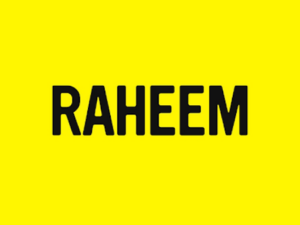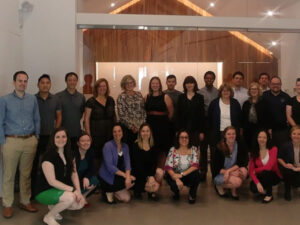Give works to promote efficient and effective giving to nonprofits in India in order to expand opportunities to underserved communities.
Sumit Tayal of Give spoke with Ashley Hopkinson on November 29, 2023. Click here to read the full conversation with insights highlighted.
Ashley Hopkinson: Can you start by introducing yourself, the problem that Give was created to solve, and how you are solving that problem?
Sumit Tayal: My name is Sumit, and I work for Give. Give is India’s largest philanthropy platform, and that means that we do and support many different kinds of giving. My role at Give is that of the Chief Operating Officer across all the work that we do, and I’m also the Chief Executive Officer for all of our work focused on corporations. In India, corporate giving is actually legally mandated by law, and therefore it’s a very large part of the overall giving ecosystem. We have a team that’s focused on that, I lead that team, in addition to my operating group.
Our mission is to make giving bigger and better. From a social perspective, India has many needs, but India also has a sizable pool of people who have the resources to be able to contribute. Our mission is to connect the two to encourage giving. A larger number of people need to start giving. The ones who are already giving need to give in a more regular, recurring, repeatable manner. That money needs to be used in a way that generates the maximum impact. That’s the problem that we are solving. All of the barriers that exist for a donor to be able to give to a cause of their choice, we want to remove those barriers. Those barriers could be around trust, they could be around convenience, they could be around legally compliant structures that need to be put in place. They could be around discovery. Because we have thousands of nonprofits, sometimes it can be very hard to even figure out who you want to donate to. So, it could be any or all of these barriers. Our role is to solve those barriers, to continuously encourage more frequent and larger giving by individuals, by corporates, by everybody who can.
Ashley Hopkinson: Yes, that’s wonderful. Who would you say largely benefits from your work and how do they benefit?
Sumit Tayal: Benefits in this case happen in multiple layers. The first layer beneficiary would be the nonprofit organization that receives those funds, which they would not have been able to access otherwise, because they either got access to a new set of donors or they got access to corporations, and therefore that funding allows them to do their work better. So, that’s your first layer of beneficiaries so to speak. The second layer is the individuals or the families or the households who benefit because of the work that those nonprofits then do, using the money. The purpose of this money is for them to be able to do more of what they are good at and therefore take their programs to a larger set of audience. So that’s the second layer. There is a third layer which often gets missed in this conversation, and that layer is the donor itself. The act of giving benefits the donor as much as it benefits the beneficiary and the act of giving is noble, it is something that we all have an urge to do. It’s part of our culture, it’s part of our morals in some cases, and that layer of benefit also happens with this transaction.
Ashley Hopkinson: That’s wonderful. I really like that third one too because I think that’s true. When you feel good it activates you wanting to give more.
Sumit Tayal: It connects you to the cause in a manner that just reading about it won’t because now you become a part of it, you become a participant in what’s going on. I started off donating a few dollars equivalent of Indian money as an employee at a firm I used to work with and through monthly payroll giving, many years back. It was a small insignificant amount frankly, but that small, insignificant amount emotionally meant a lot to me. I know I used to look forward to the report that would come in. I know I remember the name of the nonprofit that money used to go to. It connected me and eventually led me to making larger decisions in my life. That would have never happened if somebody had not facilitated that monthly payroll giving program, which was Give, by the way!
Ashley Hopkinson: What makes the approach of Give distinctive? What makes it unique?
Sumit Tayal: I think I’ll speak from the Indian context. It may not apply to a global context, but in an Indian context, Give is the only platform that concentrates almost exclusively on nonprofits and fundraising for nonprofits. There are other platforms. The largest segment for retail giving in India is actually medical, where donors are giving for individual surgeries and medical treatments because penetration of insurance is low, a lot of money in medical expenses is out of pocket and there’s a large group of people who can’t afford that. So that’s the largest segment. We don’t participate in that segment. We focus on nonprofits raising money for a range of initiatives all the way from education to health to livelihoods, to pretty much the entire gamut of social impact. The second part is that historically our focus has been cause agnostic. Our intent is to enable the donor to give to whichever cause they identify with, and especially in the world of corporate giving, that really matters, because corporate giving is also determined by the business strategy of the corporations. The causes they want to give to, the geographies they want to fund, are aligned to the business they’re in. As a platform, we’ve built that breadth of a very large non-profit network, that goes through an annual diligence that has a whole lot of backend processes that feed into keeping that network alive that enables this cause agnostic giving. I think that differentiates us and the fact that we’ve been doing this for a really long time and have stuck to that mission is testament to the fact that it’s a problem that is worth solving, and that we’ve been able to make progress on.
Ashley Hopkinson: Can you tell me more about why being cause agnostic is important?
Sumit Tayal: Each one of us has a unique journey starting from our childhood, which determines what we connect to as a cause worth giving to. I could read the same story about a nonprofit running animal shelters, and you and I will react very differently to it, depending on what our value system is about. Is this a cause worth giving to or not?
It has nothing to do with the cause, it has to do with our journey that connects to that cause or it doesn’t. Therefore in our opinion, being cause-agnostic is extremely important because we’re not saying give to education or give to healthcare. We are saying give. You have the ability to give, please give. Because when you give, it sets in motion a chain which results in impact happening at many levels. Also, once you’ve given for the first time, for the first time you may have given to whichever cause was dear to you, but the fact that you gave and that you figured that this is something you can do and you can do conveniently, and you can do in a trusted manner, we will encourage you to come back and give again. We’ve seen that in our own data that people may give to cause A, but they come back later and give to cause B, and then to cause C, because they open up to the idea of giving to a wider range of causes over their lifetime, even though they may have started with something that only they connect to. Cause agnostic is critical for getting donors comfortable with giving to what matters to them, but also for the larger ecosystem.
Ashley Hopkinson: Can you share an example of a story that illustrates the impact of the organization itself facilitating giving for nonprofit organizations?
Sumit Tayal: I’m going to give you one particular example, and I’ll focus on the word facilitation. We’re not the teachers in the school. We’re not the health workers in the village. Somebody else is. We are facilitating the flow of funds from a donor who wants to give to a nonprofit that needs it.
Two years back when India went through COVID, it required a reaction at a scale which no individual nonprofit could really match. Especially the second wave of COVID, it was a wave that needed infrastructural interventions. It needed oxygen tanks and oxygen cylinders and healthcare infrastructure, and it needed it at a time when Indian manufacturing itself was hit by COVID. So, where are you going to find suppliers who can give all of this material? Where will you put together the logistical infrastructure that is required to ship material from country A to country B when even planes are not running? Manage all the paperwork, and then make sure that all of this material, which is by the way really costly, gets deployed to the corners of this very large country? That’s the problem we were trying to solve. All of this has to happen when you’re going through a once in a lifetime disaster situation.
We have hundreds of nonprofits in India that had access to the hospitals where this was needed. They knew what the need was. But those hundreds and thousands of nonprofits did not have the ability to stitch the whole story together. That was where we played the role of that facilitator. And by the way, because the stories of the deaths and the agony that was going on was so visible in the media, there was an outpouring of support globally for what was happening in India; literally millions of people wanted to give. So, you have a once in a lifetime situation of millions wanting to give and you may have thousands of nonprofits who need that material urgently, but the dots are not connecting. These millions could have given to these thousands, but that would not have resulted in that material getting bought at scale and getting deployed. We became that facilitator.
We ran what was called the India COVID Response Fund. On one side we had thousands and thousands and thousands of donors across the world, especially the US, India, UK, wherever there is a large Indian diaspora presence. All of those countries. On the other side, we had these hundreds of nonprofits that we had worked with in the past, or that we knew of, and as a central agency that was collecting these funds, and we collected almost 100 million, which was way more than we had ever done before. We were able to collect that money, pool it, order material, and make large commitments for procurement from India and from other countries in the world for oxygen equipment. We were able to find corporates who were willing to help us put the logistics together. Amazon, for example, helped us get planes when there was nothing else. Amazon in its own planes helped us to fly that material into India. Then, we ran the network of finding logistics providers who would take this material from central take it to the nonprofits, to the hospitals that needed it, and those nonprofits then helped deploy it inside the hospital.
This entire chain, somebody had to create. We ended up being the ones who created it, and that is facilitation at the time of need at a scale that could not have been replicated otherwise. For me, that’s a great example of what intermediaries should do. Solve problems that nobody else in the ecosystem will solve, by bringing the ecosystem together. That’s the case study that, in my head, always becomes a benchmark on are we doing the right things today? Are we solving problems that are worth solving?
Here are some key numbers that are relevant to provide some additional context. Almost 150 million dollars raised. 1,200 hospitals across India. More than 700 nonprofits, if I remember correctly, were part of this exercise. More than 150 corporations. And if I remember correctly, 500,000 donors, individuals, across the world that contributed this money. It was a scale that was many times beyond what we had ever done, but it worked.
Ashley Hopkinson: This is a good segue into the next question. How as an organization do you measure success, and what is the evidence that you’re making progress?
Sumit Tayal: The simplest measure, which is imperfect, but its simplicity justifies it being used, is the amount of funds that we influence. It could be the amount of funds that get raised on our platform for nonprofits. It could be the amount of funds that we are advising corporate donors on, on how they should be deployed. It’s the amount of funds that we are directly or indirectly influencing. For us, that’s the simplest measure to know we are making progress in making giving bigger? Bigger is more funds. We solve the funding part of the equation. We don’t solve the people part of the equation. We don’t solve the impact part of the equation. We solve the money part of the equation. So, the amount of funds influenced is a critical measure that we use. The other measure that we want to really get good at is the number of beneficiaries. It’s a highly imperfect measure for obvious reasons, but for lack of a better substitute.
The measure that we want to use is to be able to quantify the impact of what this money got used for. We haven’t been able to use it so far because those studies and that data doesn’t exist in most programs that we support, but that’s an endeavor we are still on. If not for all, can we do it for some, can we do it for one, but can we start connecting what happens to the money after we give it in quantitative terms and not just by counting the number of beneficiaries, the number of meals, and the number of students supported. Those things are available, but we know their outputs. They’re not impact metrics. So, we’d like to move to the impact metrics gradually over time.
Ashley Hopkinson: I imagine that someone who’s been in this work for as long as you have been has insights and teachable lessons. This next question is for you to teach me, teach somebody else that’s reading this, what insights or lessons can be taken from the work that you’re doing that others could use?
Sumit Tayal: So, I wouldn’t even refer to it as advice, but suggestions at best. The first one would be in the world of giving, it always comes down to trust. If you’re going to be building a nonprofit or a social enterprise to encourage giving, it has to solve for trust. There are a million reports out there that will talk about how inequality of wealth is increasing over the years. The total amount of resources available in the world is not reducing per capita. That’s only getting bigger. But there is a concentration of wealth that’s happening between the haves and the have-nots. Giving as an act supports the flow of wealth from the ones who have it to the ones who need it. In simpler words, that is what it does. The real barrier to that happening is trust. People want to give. In our work, we don’t go and create the urge to give. We facilitate that urge, which already existed. We facilitate its fulfillment. And what’s stopping it from getting fulfilled is trust. Is my money going to the right person? Is it going for the right cause? Will it get used the right way? Our learning has been that anything that you can do, from finding verified nonprofits to enabling easier payments, to enabling better reporting for what the money was used for, are all methods to take up the trust in the donor’s mind. The urge to give will automatically result in them giving as a result. That would be my first suggestion: focus on the trust aspect.
The second would be to focus on the scale aspect. Nonprofits by definition, at least in India, partly because of the legal structures around it, and partly because that’s how it’s evolved, are by and large small enterprises. Therefore, their ability to raise funds by themselves also gets restricted. As a giving platform, if we also operate at a very small scale, then we’re really not solving any problem. The value we bring is only if we are able to solve these barriers at scale. Only If you’re able to solve them for thousands of nonprofits and not for 10 nonprofits. We’re able to solve for them at millions of dollars and not thousands of dollars. Keeping that scale filter in mind is extremely important. Otherwise, we’ll just end up being one more and we haven’t solved anything. It may be gratifying, but it isn’t solving a real problem in my opinion. Views on this are a split. I think especially as a giving platform, it’s highly essential to pursue. So, those are the two messages that I would leave with you.
Ashley Hopkinson: You learn from the things that didn’t go the way you planned, what you tried that didn’t work, and it teaches you an important lesson. Can you offer something that you tried and it missed your expectation somehow and what you learned from it?
Sumit Tayal: Oh, we have a box full of those. We have examples of tech platforms that we have built, with immense amounts of commitment and cost, and then they took off really well and then they just ran into trouble, which we never foresaw coming. One of our key aspirations was to figure out how to support recurring giving by individuals. One of the most exciting products we put together was a subscriptions platform, where I could sign up as a donor. I will get charged on my card the same amount every month. But here’s the thing, the money doesn’t just go to a nonprofit, it goes to a specific beneficiary that the nonprofits put. So, I actually know the person that the money is going to and that creates a bond, which we hope will keep the giver committed to continuing to give for much longer than it would’ve happened. That was the piece, that was the theory.
It worked well. It got a lot of attention, a lot of donors signed up. They stayed on the platform for a really long time. Then we realized that when we were scaling this up, we ran into logistical difficulties on how do you get reporting and how do you get data on thousands of beneficiaries back to the donors? It wasn’t something we had thought through as much. That became the basis. So, it was a failure that hurt. We were really excited about it and then it didn’t grow beyond a point. We had to eventually get close to scaling it down, shutting it down. But that became the basis for building the next platform, which we call Monthly Giving. It’s in the works, it’s getting launched right now. Some of it is live on our website, where all of this gets solved, because this time we did not design it ourselves. We went and designed it with nonprofits who are going to give that reporting, and they became a participant in designing the system itself. We are hoping that will solve the problem and how to do this better.
We’re not giving up on it, but we are starting all over again learning from the last failure, solving for this. I’m sure new problems will come up this time, which we will solve as we go along, but that is the natural process of innovating and building something new. If it was already there and solved, then why would we waste our time? We would just use it. So, that’s one example.
There’s another program which Give has been running for 20 plus years for workplace giving, Payroll Giving. That’s the one that I had signed up for 20 years back. It is an amazingly wonderful product, but that hasn’t scaled for the last 10 years. It’s stayed stagnant. We’ve not had the time to go back and really invest our energies in understanding why, but it’s one of our top priorities that we want to pick up in the coming months to see what has changed in user behavior. We are amongst the largest players doing it in India. So if we solve it, we know that even everybody else around in the ecosystem will benefit from that. It’s a problem worth solving. But right now if I look at it, I count it as a failure because it’s stagnant. The number of employees in Indian firms has skyrocketed in the last 10 years, but the amount of money that they’re giving as employees hasn’t. That’s a very clear case of a failure. That’s the one we want to solve for next, and it’s a lovely opportunity, so.
Atul, who’s the Founder 2.0 of Give – the first founder was Venkat who started this 23 years back and exited when Atul took over in 2017. Atul is the founder of what Give is today. He comes from a tech startup background, and I think one of the things we’ve done right in our culture is that we do not search for scapegoats when we fail. We do not see it as a negative. We do not penalize anybody. We encourage it.
What we feel uncomfortable about is sitting and continuing to think and cover every risk, that’s not a good idea. I’d rather that we start acting, try it out. It’s okay if it fails, let’s try it again, but don’t just sit on it. Inaction is a bigger problem than failure, because we don’t operate in a space where every answer has been figured out. It’s not. You’re going to figure some of it out. Somebody else will figure some of it out, but you’re not going to get there until you act. So, bias for action is very high. Comfort with failure is also therefore very high.
Ashley Hopkinson: We talked about scale and how that’s important. Can you specifically talk about how Give is working to advance systems change?
Sumit Tayal: Let me take the example of one of our products called Discover. It’s an online directory of nonprofits in India. It currently has 57,000 nonprofit profiles on it, out of which around 3,000 are verified nonprofits where we’ve actually done diligence on there. Now, how does this really help? If you want to go invest in a mutual fund in India today, you have at least 10 online platforms where you can go and figure out a fund that works for you in five minutes, using highly quantitative data, stretching back five years. You’ll see lovely charts on performance. You’ll see all the information on management, you’ll see peer analysis, you’ll see benchmarking, you’ll see everything, free. At the click of a button. If you want to figure out which nonprofit to support, and you want any detailed information about that nonprofit, it can take days of research. Because that information, while publicly available, is not organized, is not filterable, is not amenable to benchmark it. We are solving for that on Discover.
The system level changes that it creates should make nonprofit discovery far more democratic. The largest nonprofits who have the ability to invest in social media, the ability to invest in SEO are not the only ones who will get discovered there. The platform will enable much smaller grassroots nonprofits to get discovered, especially by large corporate funders, not just by retail individuals, corporate funders who are willing to spend the time to do their research on a nonprofit before making a choice. For that research they need data, and this platform should give them that data in an easy to use way.
That can fundamentally shift the way funding happens for nonprofits in India, not just towards smaller nonprofits, but also towards nonprofits that invest in collecting data and making it visible. It’s a great incentive for nonprofits to invest in data collection and reporting. It’s an incentive for corporations to invest in that research before making a decision, and not just rely on a reference. All of it together can lead towards better longer term giving. So at its phase, it’s just a discovery platform. It’s just a listing. But underneath, the change it drives over the long term is far more systemic. And that’s our hope, that’s our desire.
We also do transparency seals for nonprofits. If they put more data on the platform, they get higher stars and more visibility. We’re not judging if that data is adequate or not. We’re just saying, please put more, there are 200 fields. Why don’t you disclose more? And that’s to your benefit. For the ones that we do verifications, we give them a gold, silver, bronze seal, which gives us, a donor, the comfort that we have checked a lot of this data ourselves. That, especially, for corporate giving, really helps them make a better choice. So, it’s a lot of these small things all built around the platform. The systemic change has to be that your giving decision can be well researched and not just a spur of the moment decision.
Ashley Hopkinson: What do you think is needed from other actors in this space? What would help to support the work that you’re doing to advance system level change?
Sumit Tayal: I think the work that we do requires us to reach out to corporations and individuals at a very large scale. That can only happen through significant investments in technology and marketing. It’s not a great analogy, but the reality is, if in today’s world you want to reach out to your target segment, you need to use social media. Using social media is extremely costly. It requires immense technical expertise. Good digital marketing versus that can make all the difference. It requires significant upfront investments in advertising and the technology behind it, without which you can’t even reach critical mass. So, your campaigns are failing, not because they’re bad, but because they’re just not big enough, and they’re not backed by enough capital. The realization that fundraising requires tremendous investments, but if done right can also give you highly leveraged returns, is a realization that needs to happen for donors, especially large, corporate and philanthropic donors and foundation donors. It also is a realization that needs to happen for nonprofits. There is only so much you’ll be able to get if you run a campaign with a thousand dollar budget. Whereas a hundred thousand dollars budget can take it to a whole different project.
Now, of course, you don’t have the money to fund it, but you need to talk to your donors about the fact that funding for fundraising gives you returns that are way more than funding for programs. Funding for fundraising allows you to raise a lot more money, which goes into your programs. It’s a highly leveraged form of funding. That’s the change we want to drive both on the donor and the nonprofit side in the ecosystem, because both of them can support this. This is not something that can be done at a smaller scale. It has to be done at a large scale, at a significant amount of investment. So, the traditional approach of saying, let’s do it gradually, let’s do it bit by bit, it’ll take forever to get anywhere that way.
Ashley Hopkinson: Raising sufficient funding to keep the work going is one of the biggest challenges for every social entrepreneur. But I want to ask you if you’re facing any challenges currently that you’re working to overcome or working to solve, aside from funding?
Sumit Tayal: Yes. I think there are two parts to it. One is outreach and making more people aware of what we do. That is definitely a challenge because it’s a large world. India’s a large country with a very large corporate sector, and to be able to reach each one of them is not an easy job. So yes, that is definitely a challenge we are solving for and that’s top of our minds when we wake up every day.
The second one, which is not unique to us, but which is really an important one, is talent. We are lucky and fortunate to have talent from the best institutes of India, with the best credentials and top tier resumes. They’ve made the conscious choice to take personal cuts to come and work in the sector and work with us. We need a lot more of that. When we operate in digital marketing, we need the best digital marketing talent, the same ones that the biggest unicorns in India are going after. We want the best technology talent, we want the best sales talent. The ones that every large company in India wants to hire. You would hire that same person because they are good at building relationships, and that’s what we need to do.
Just because we are in the nonprofit world, or the social impact world, doesn’t mean our talent needs to be any lower than any other part of the economy. We keep that bar high and we don’t want to relax that, but that’s the second big challenge that we solve for every single day. We haven’t found the right answer, but we keep searching, and along the way we find people who are willing to make the shift.
Ashley Hopkinson: Where do you see Give going in the next five years? What’s the big picture vision, if you can paint the picture for me?
Sumit Tayal: We are a drop in the ocean. All of private giving in India today is barely $12 billion. Retail giving in the United States is $400 billion. Just retail giving! If you add up the rest, it’s a much larger number. All of the work that we do in India, it may sound large, but it’s large because we’re just talking about ourselves. We’re not looking at the bigger picture. It’s a drop in the ocean. Five years from now, we would want to be in a situation where we’ve been able to drive retail giving to many, many multiples. Not double or triple, but much more than that, because that is the potential it has. Even then it’ll still be a drop in the ocean. Corporate giving is legally mandated, so the size of that market is somewhat defined. But what we want to do with that space is to be able to drive better giving, data-driven giving, more impact, focused driven, rather than just decisions that may be based on other factors. Therefore, my hope would be that we would be working with the largest givers in India, the largest corporations in India. The top hundred corporations in India, by the way, control almost 50% of that corporate giving. It’s a very concentrated market. I’m hoping that we’ll in some way be able to influence that giving decision towards better programs and better nonprofits. That’s our goal. All of the work that we do is driven by one of these two factors, making giving bigger and better.
Ashley Hopkinson: Thank you so much for talking with me today.
Click here to read the full conversation with insights highlighted.
Ashley Hopkinson is an award-winning journalist, newsroom entrepreneur and leader dedicated to excellent storytelling and mission-driven media. She currently manages the Solutions Insights Lab, an initiative of the Solutions Journalism Network. She is based in New Orleans, Louisiana.
* This interview has been edited and condensed.
Find other organizations working to expand opportunities in underserved communities.







